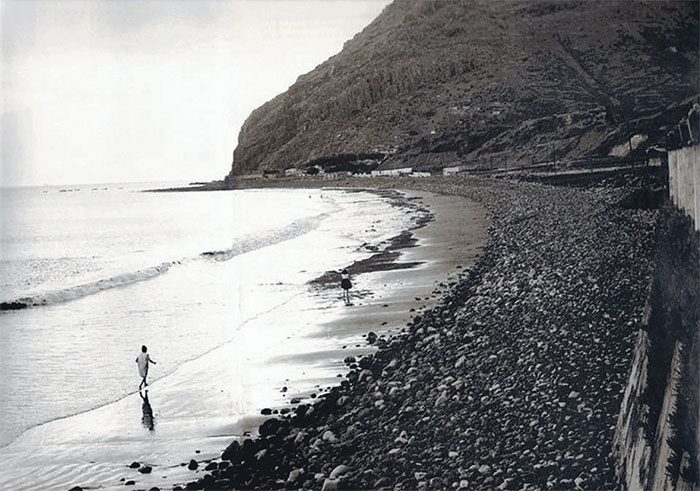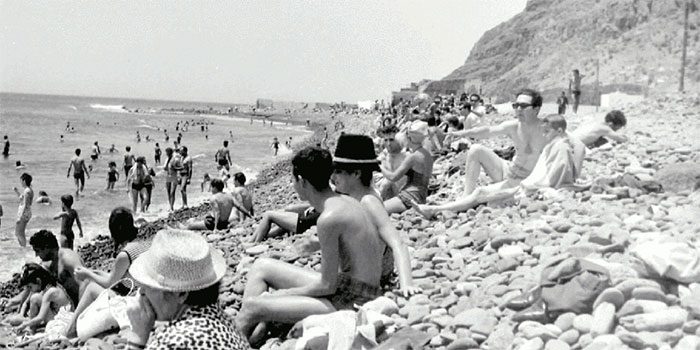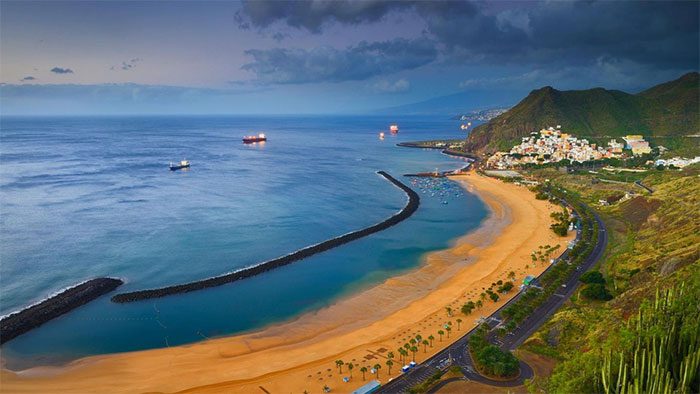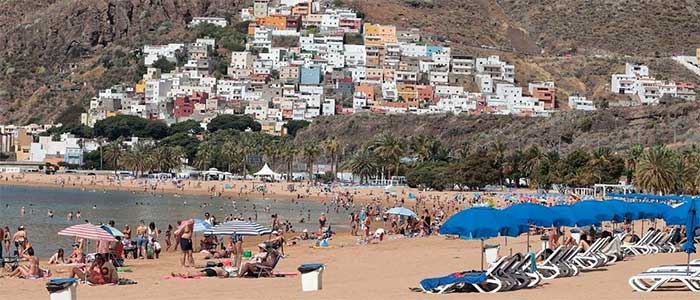Playa de Las Teresitas in Tenerife, Spain, is one of the most famous beaches in the Canary Islands. However, it is not a natural attraction but rather a man-made creation.

In the past, Playa de Las Teresitas was very different from the beach tourists see today. Back then, it was a fairly dangerous beach, full of pebbles and black volcanic sand, with waters that were not as calm as they are now. However, it was the only beach close to Santa Cruz. The others gradually disappeared as construction companies extracted sand. (Photo: Tipsandtrips).

In 1953, the Santa Cruz City Council decided to construct an artificial beach at Las Teresitas. It took 8 years for the design to be completed, and an additional 4 years for approval from the city council and the Spanish government. (Photo: Tenerifelicidad).

The first step was to protect the beach from strong waves. A large breakwater was constructed. A staircase was also dug down to the sea to prevent water from washing away the sand that would later be deposited on Las Teresitas. (Photo: Peapix).

White sand was brought here from the Sahara Desert (Africa), totaling around 270,000 tons, and was used to create a beach that is 1.3 km long and 8 m wide. (Photo: Unusual Place).

The beach opened in 1973 and quickly became a favorite destination for locals and tourists alike. (Photo: Eldia).

The Canary Islands often import sand from Western Sahara to rebuild beaches and for use in other large-scale projects. However, this practice also harms the environment, landscape, and fragile ecosystems of the extraction areas. (Photo: Mike Workman/Shutterstock).

Currently, sand is a limited resource that is gradually depleting around the world, primarily due to human construction activities. Extracting sand from sensitive areas disrupts biodiversity and creates additional environmental risks. For this reason, in recent years, many activists and scholars have called on the United Nations and the World Trade Organization to take stronger action to limit the damage caused by sand extraction. (Photo: Unusual Place).




















































